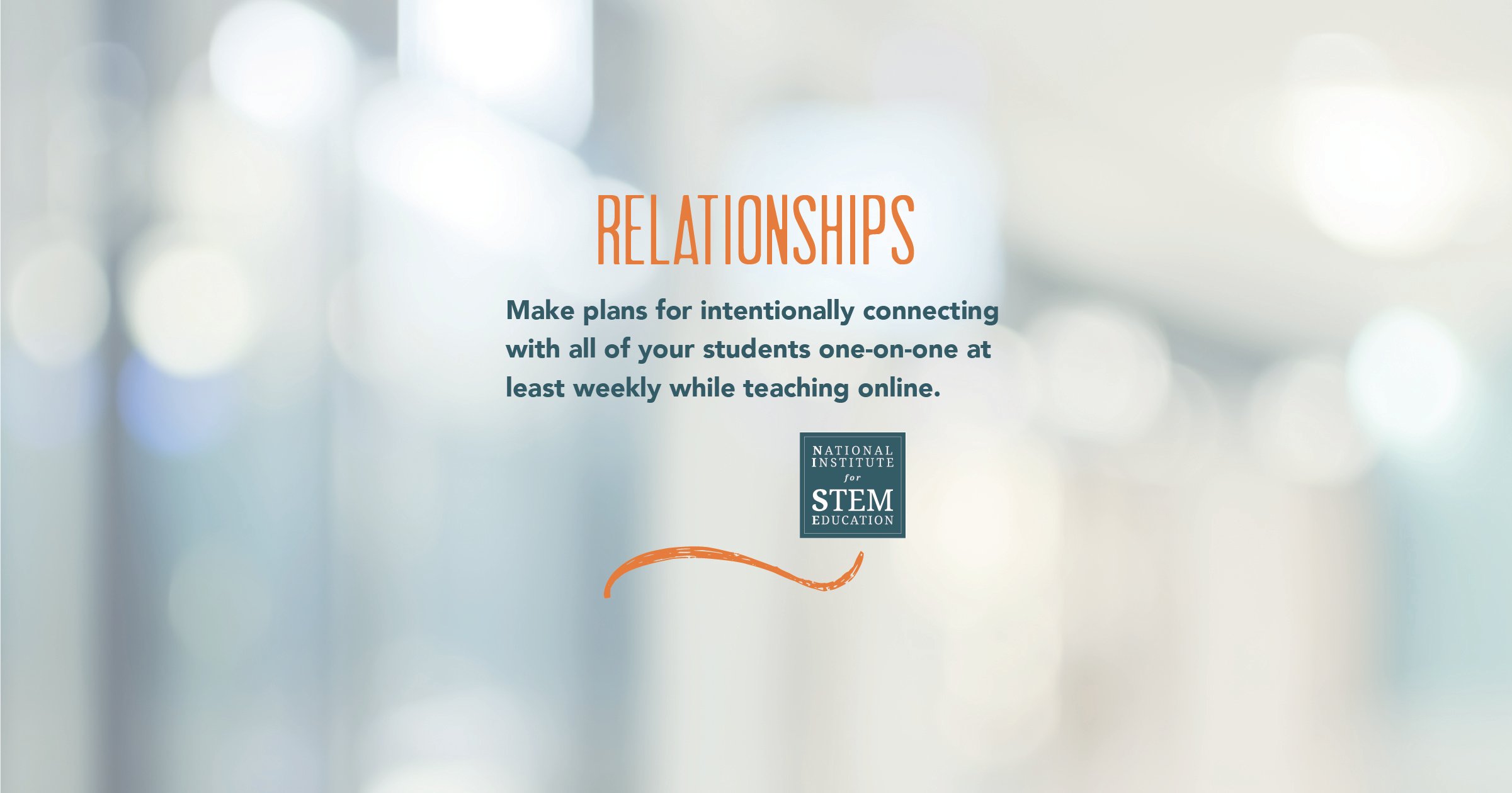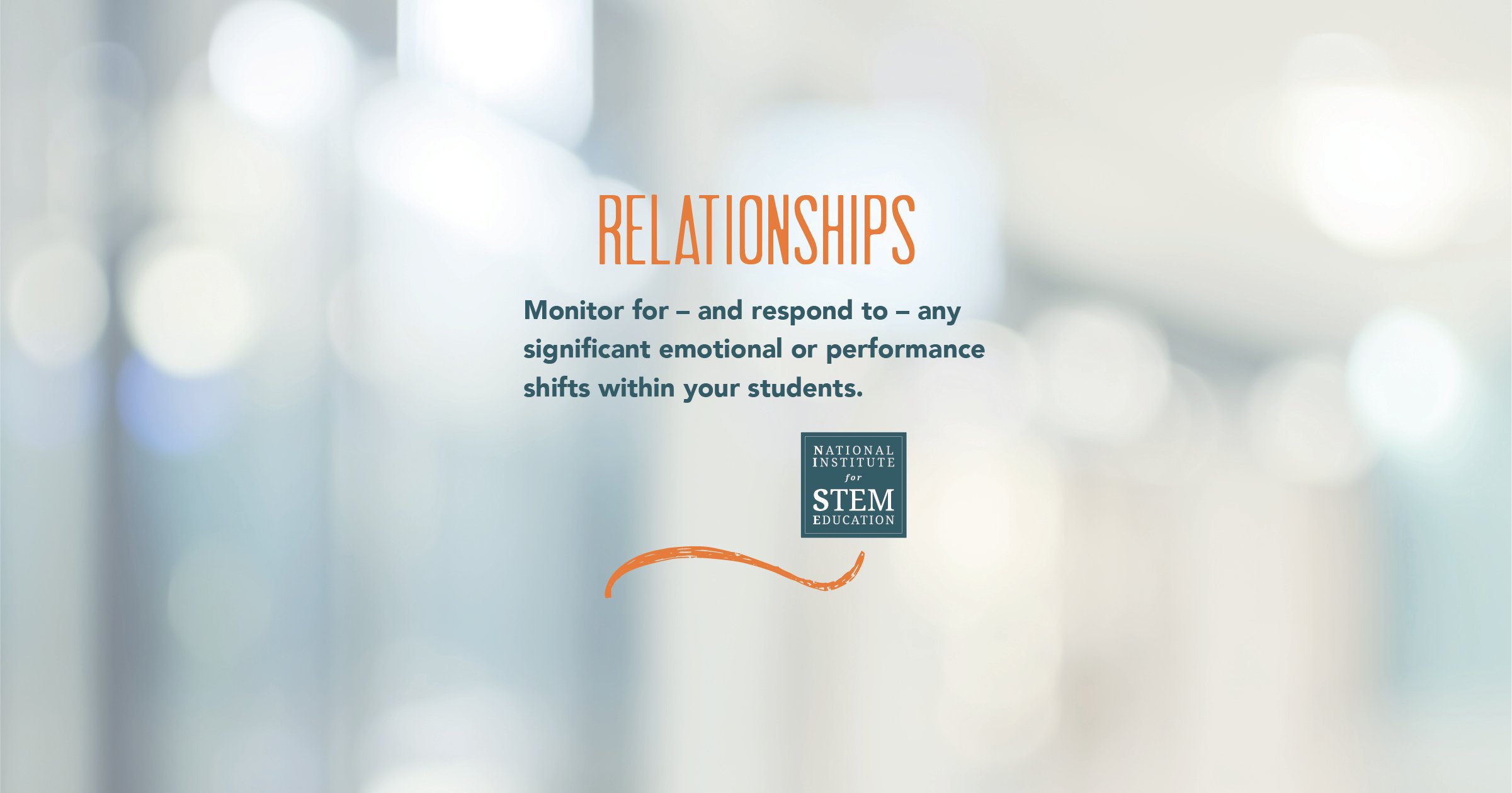Learning is a social endeavor. You already know this, but how do you honor this cornerstone of education when you teach virtually? Let us offer some ideas.
In this second edition of the series Making Online Instruction Work - Now!, we explore the importance of relationships and strategies that positively impact student learning in online settings.
We will explore how you can:
- continue strong teacher-student relationships from a distance, and
- virtually support the social-emotional needs of your students.
Teacher-Student Relationships
In your normal day-to-day activities as an educator, you naturally connect with your students at every turn. That is how you built those relationships in the first place and have been able to nurture them over time.
Look, it’s no secret the realities of online teaching and learning are unique. You’ll never be able to recreate the exact conditions of your physical classroom and that is not the intent. The point is that you need to find ways to maintain the human connection with your students despite the physical distance that looms between you. Here are some ideas to get you started.
Connect often.
The reality is that your students still need that ever-important connection with you, especially in an online learning environment. Students need to know you are still “there” for them. And, since you aren’t right in front of them all the time, you will want to increase the frequency of your communication with them.
Use multiple forms of communication.
Though, there is more to it than frequency. Sending a bunch of emails to your students can fall flat and feel impersonal. It could actually diminish, or detract from, your current student relationships.
Communicate in a variety of ways. Sure, you have your preferred methods like emails, texts, maybe even a group messaging service, but don’t limit yourself. Try some new tools such as video or screen-casting to increase the diversity of your communication, and possibly even increase student engagement in the virtual setting. Video conferencing allowed for much greater nonverbal communication and is something you will want to become comfortable with; it's becoming the expectation rather than the exception.
Establish virtual classroom hours.
The idea with virtual classroom hours is to have set times when you will be online and accessible to your students. Here are some points to think about:
- Create a schedule with multiple time slots.
- Allow students to sign up for times that work for them. Decide and communicate in advance whether or not you are requiring students to participate or simply providing this as a resource.
- Set time limits to increase your overall efficiency and availability.
- Ensure students know what format to use (e.g., Zoom, Google Hangouts, etc.).
- Ensure students can access and work with the format.
- Work with groups or individual students during virtual classroom hours.
Virtual classroom hours are also a way to check in on students’ emotional well-being in in addition to their academic needs.
Follow up individually.
Just like in your physical classroom, students' needs will vary over time. Pay special attention to students’ affect, learning, and overall organization as you work with them online. You know your students. Follow up with them individually as needed. Use the format that makes the most sense based on what you know about their resources. Most importantly, continue to make individual personal connections, not just whole and small group interactions. Be especially watchful for students who go “dark” and just sort of disappear. Seek them out and don’t allow them to fall through the cracks.
Tip: Make plans for intentionally connecting with all your students one-on-one at least weekly while teaching online.

Students’ Social-Emotional Needs
Making a positive difference in the lives of young people and the world are some of the main reasons educators become - and stay - teachers. Accomplishing these aspirations means caring for the social and emotional, as well as the academic, needs of one’s students. This is absolutely as important in the virtual learning space as it is in the physical classroom.
You, along with their parents, know these children best. Use the following ideas to monitor your students’ social-emotional needs:
Pay attention to nonverbal communication and emotions.
Watch for unusual, gradual or drastic shifts in students’ emotional states or classroom performance. For example, if a typically engaged student’s participation continues to be less than optimum, seek to understand. Their behavior is communicating something. Connect directly with the student before making assumptions about what the problem may be. You can follow up with a simple email, text, or one-on-one virtual chat. However, if the behavior persists over time, you may want to investigate further. While phone conversations are better than not connecting at all, video communication definitely allows for a greater depth of communication. It is highly possible, especially during unusual times, that a student may be concerned or having difficulty with something that is taking place completely outside of your classroom. As always, involve students’ parents as appropriate.
Communicate regularly.
Having regularly scheduled check-in times with students and virtual classroom hours are two important ways to make sure you frequently connect with your students. Of course, they may want or need your support with academic assignments, but it is often during these times that students will share other important information completely unrelated to the learning task at hand. This is where being an active listener will be very important for you. As an online educator, strive to make student checkpoints a protected part of the virtual classroom schedule.
Proactively reach out to parents.
Parents want the best for their children. That said, they may not observe all of the same things that you may see in a learning setting, even if it is remote, virtual learning. Likewise, parents may observe things that you do not see! Keep parents informed regarding any concerns or shifts in behaviors to monitor. Work with parents to understand potential social-emotional changes in their children, and collaborate on any potential responses. You might want to have virtual classroom hours for which parents can sign up, too!
Tip: Monitor for--and respond to--any significant emotional or performance shifts within your students.

Search Institute
See the checklist, Building Developmental Relationships During the COVID-19 Crisis, provided free by the Search Institute for additional ways to connect with students.
Next Steps
As you can see, relationships matter as much in the virtual learning space as they do in the physical classroom. Apply and expand these ideas to help your students gain the most they can from your instruction. While some things can be easier in the online environment, maintaining meaningful student relationships may likely require some extra effort.
Coming Soon
Watch for more information in the Making Online Instruction Work--Now! series. Our next edition will focus on facilitating students’ self-management skills in the online learning environment.
